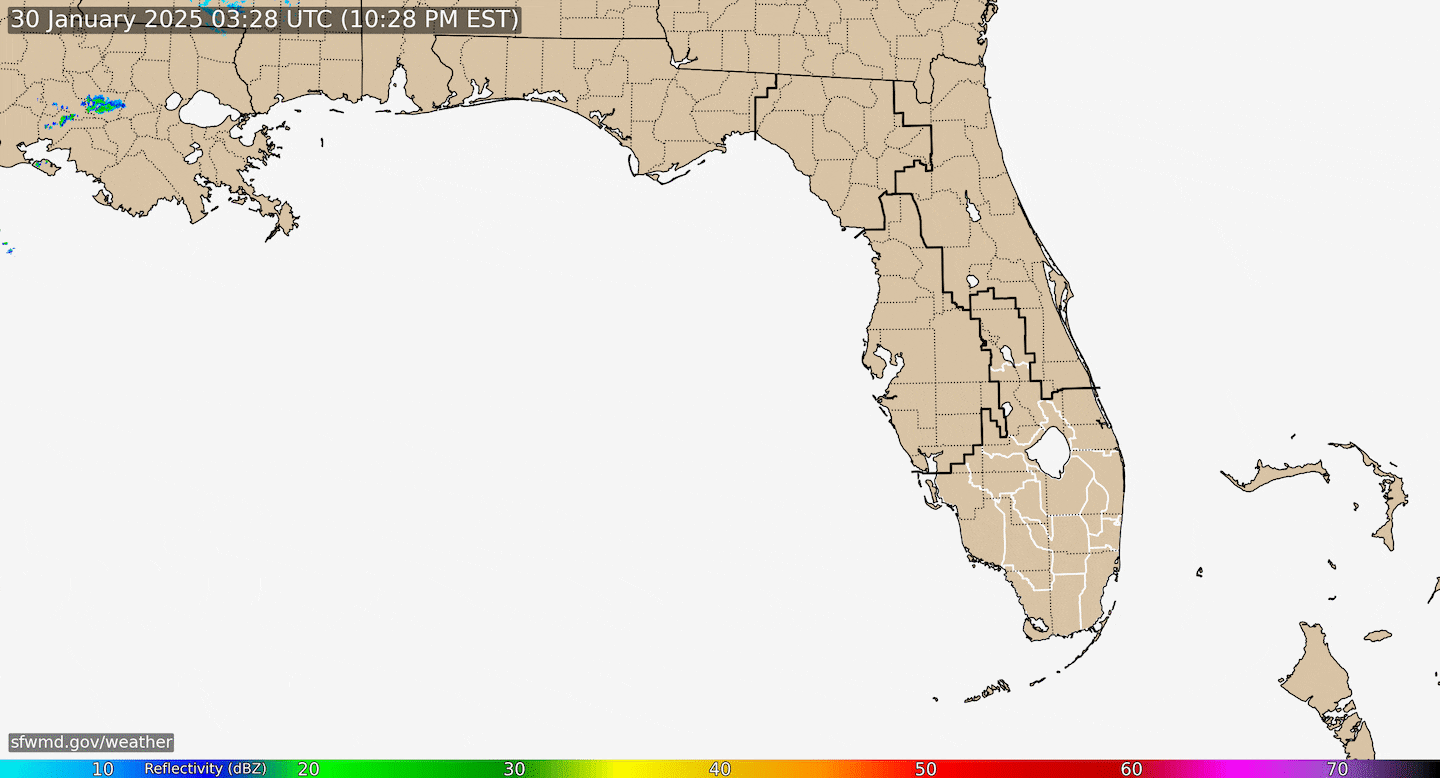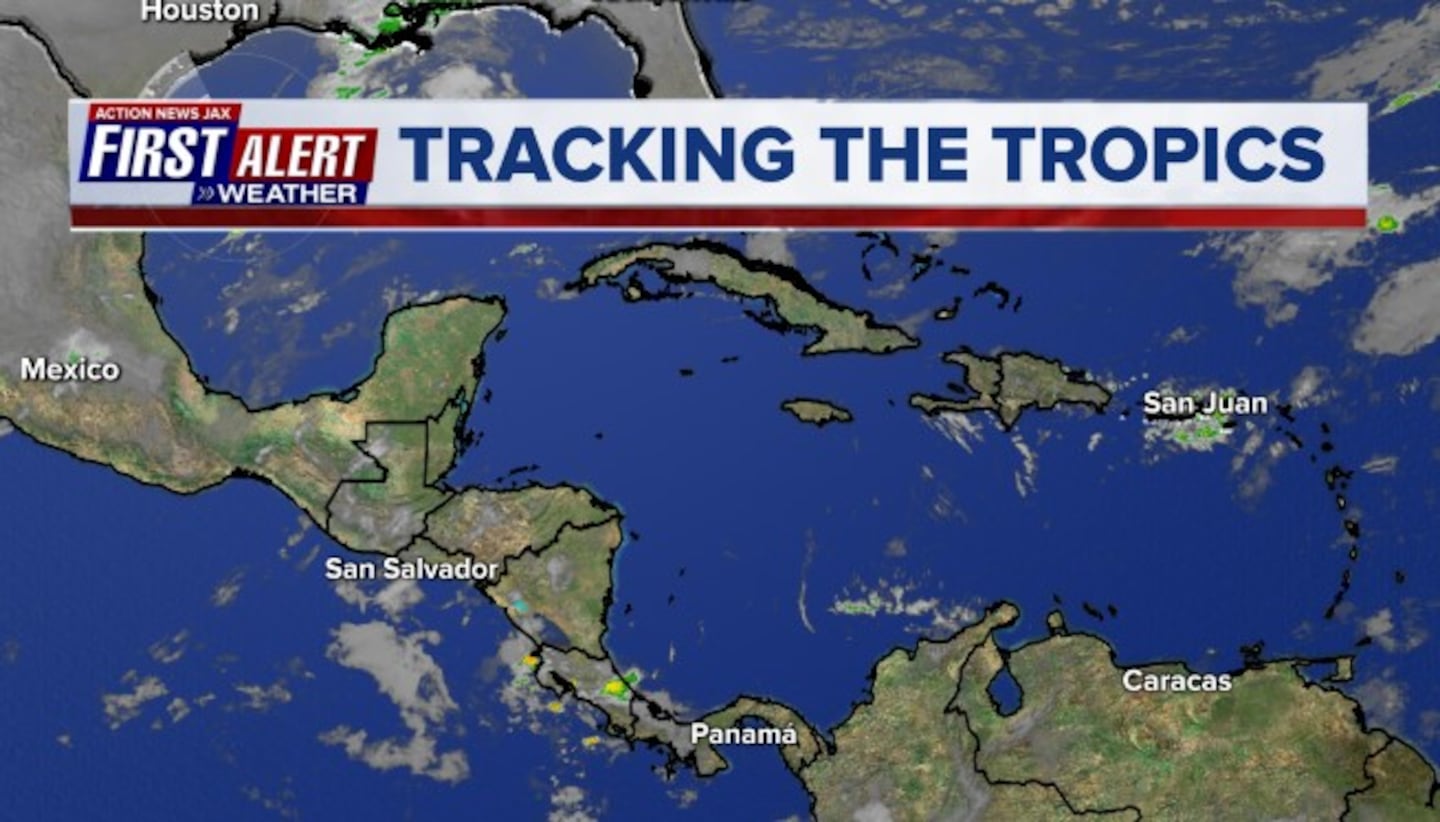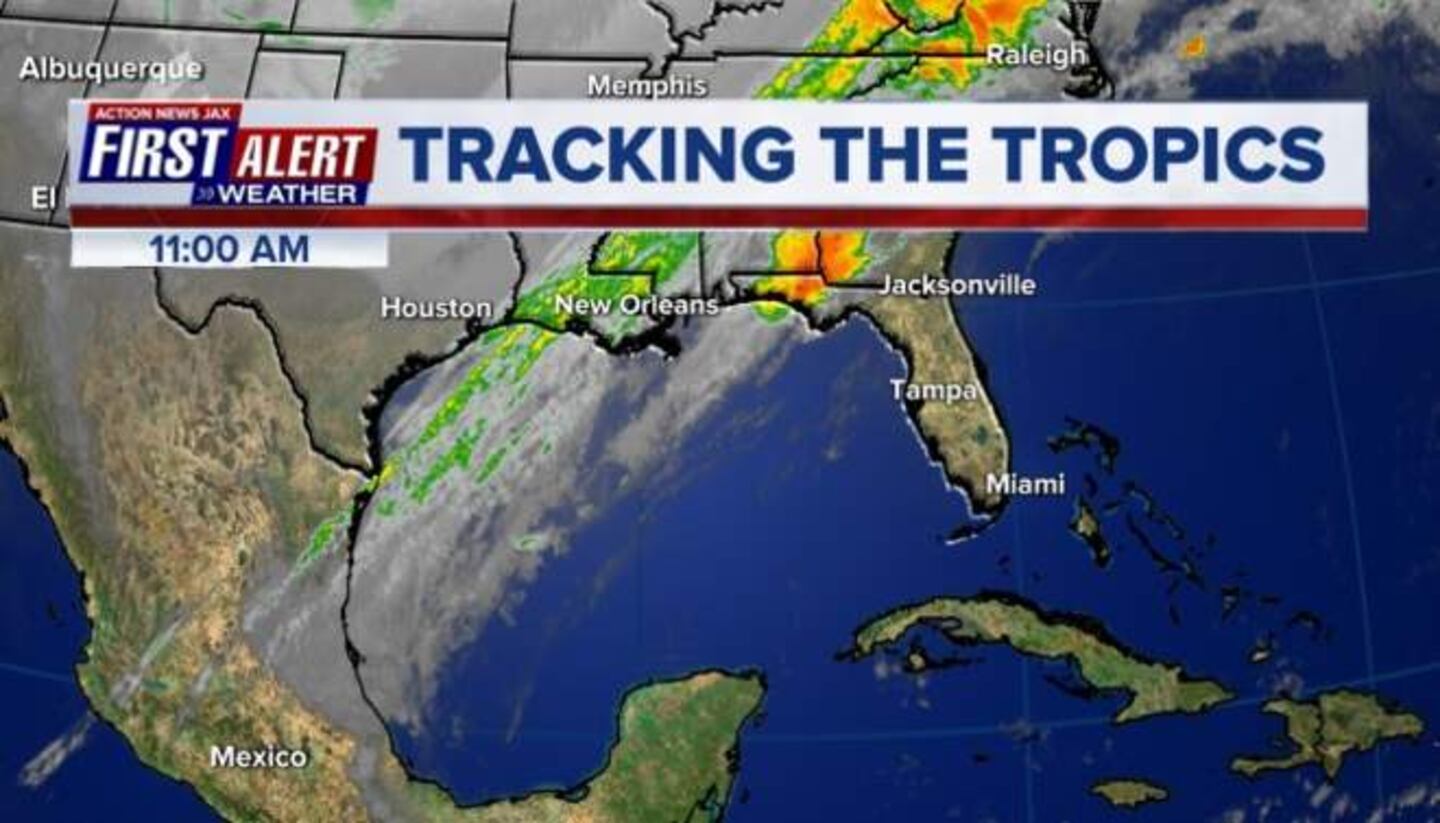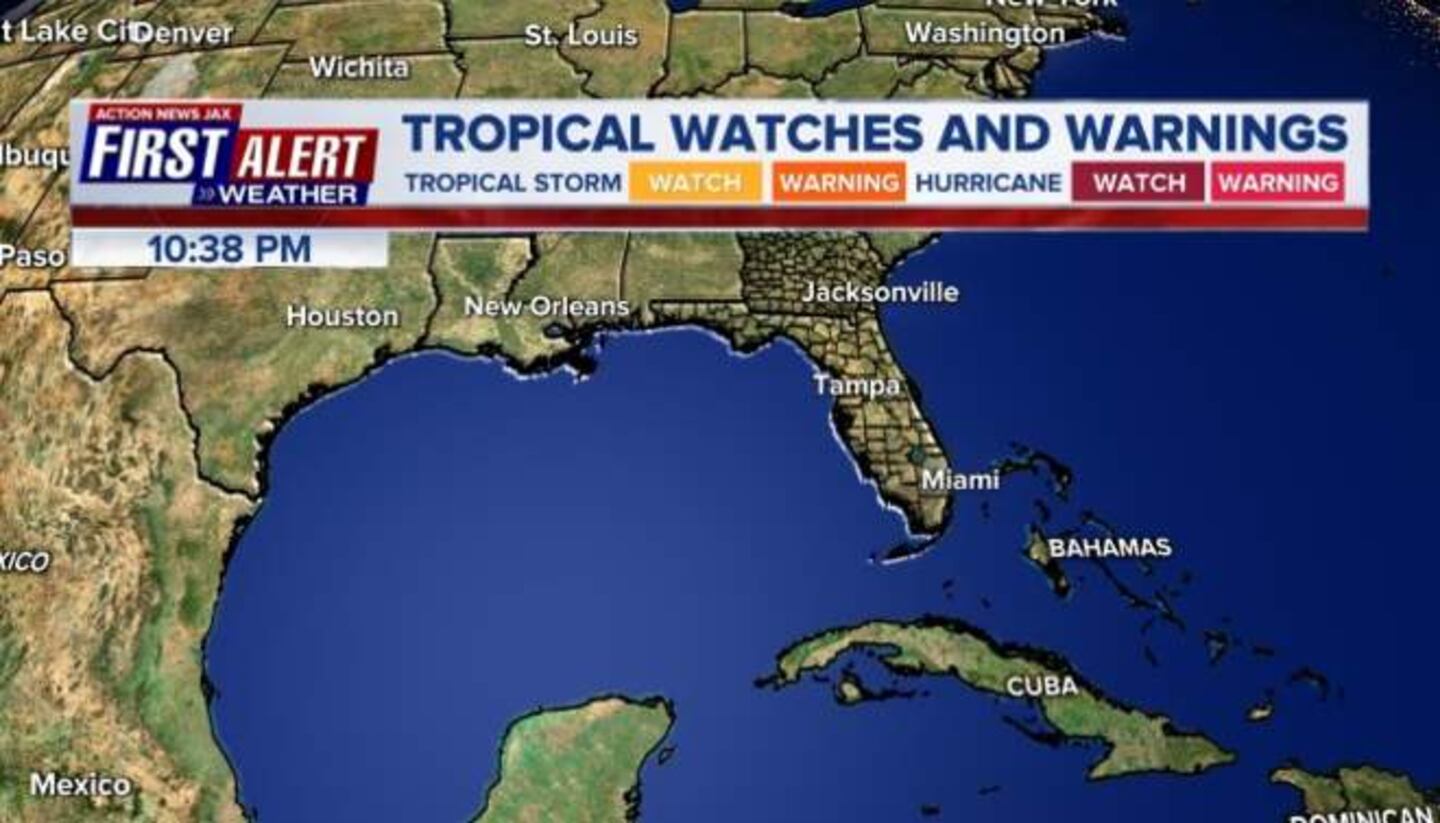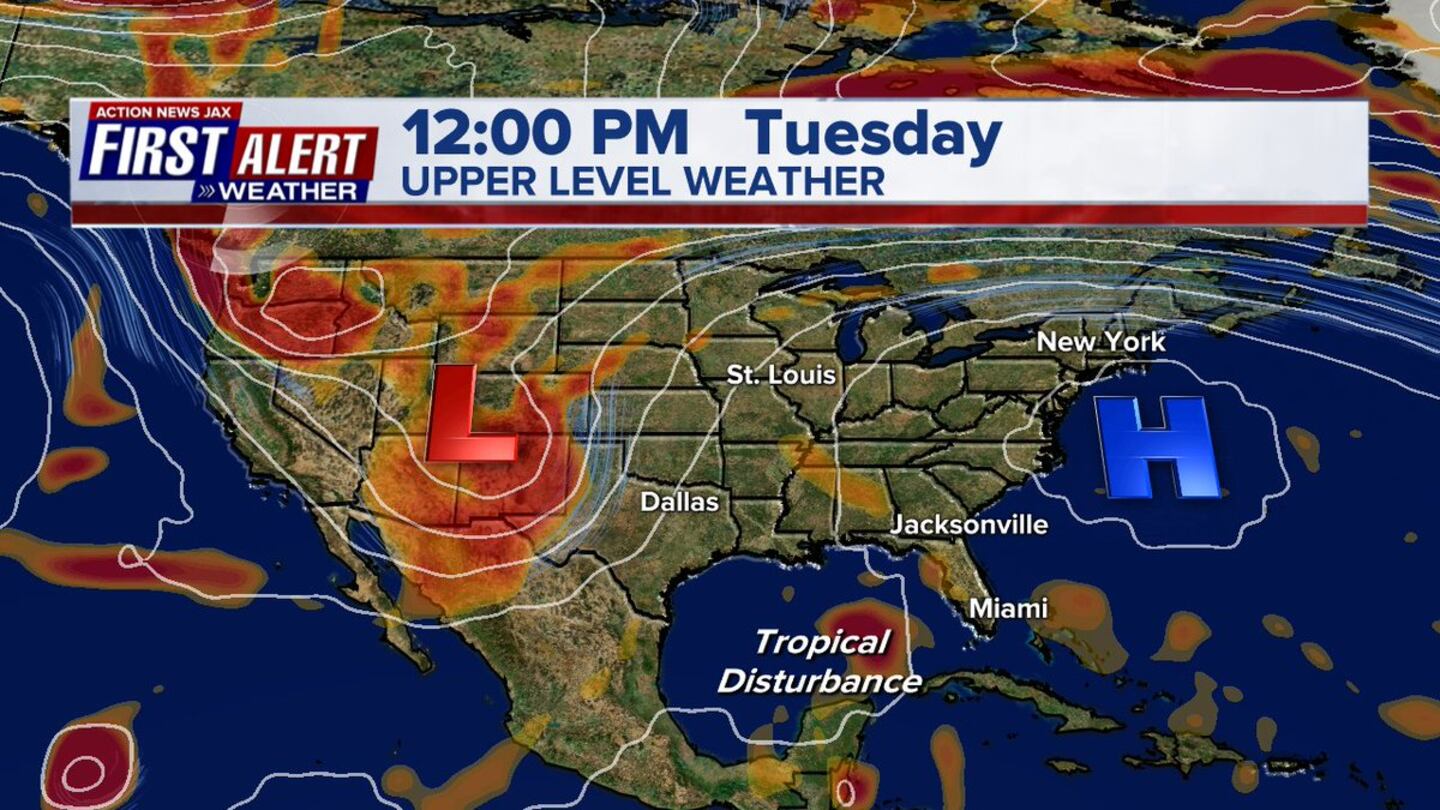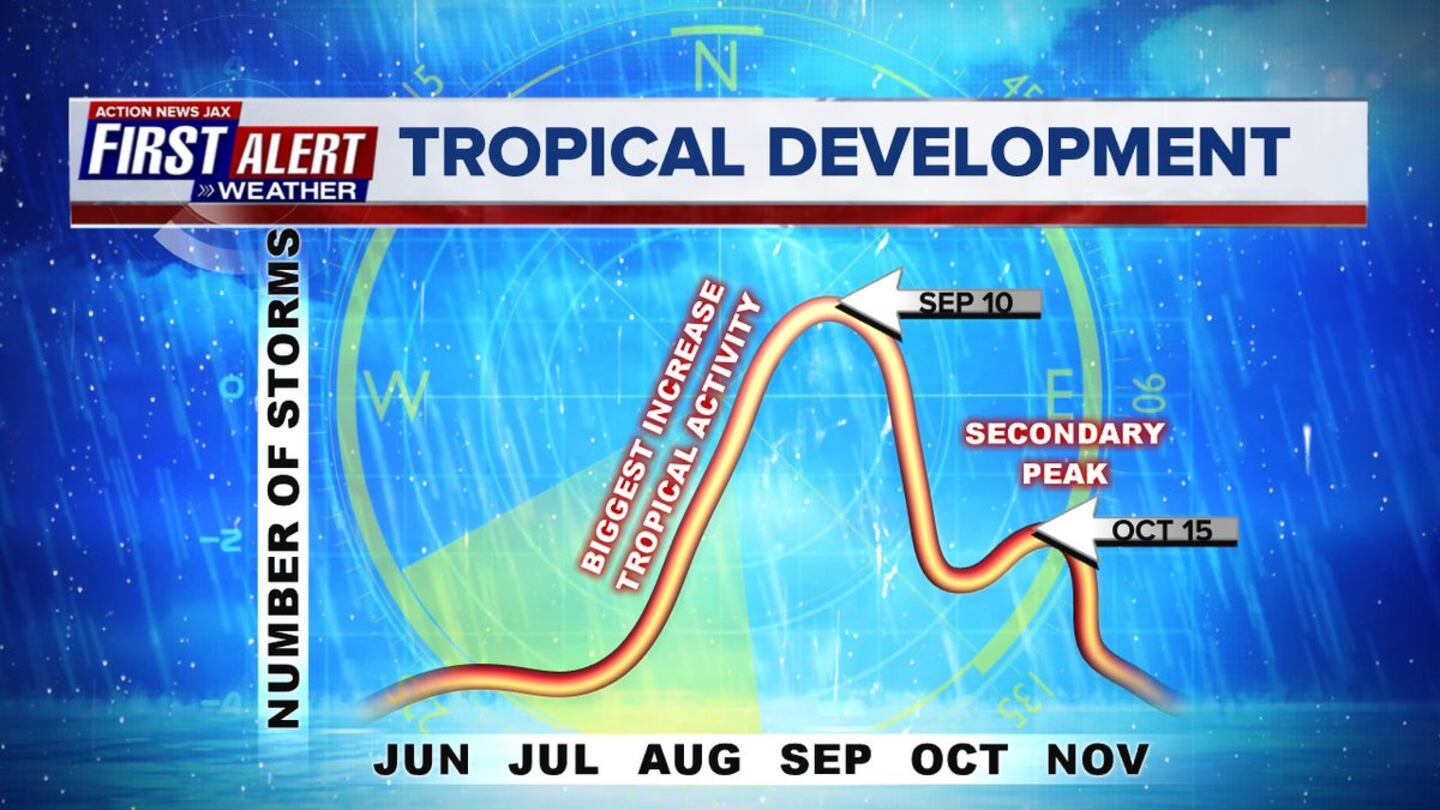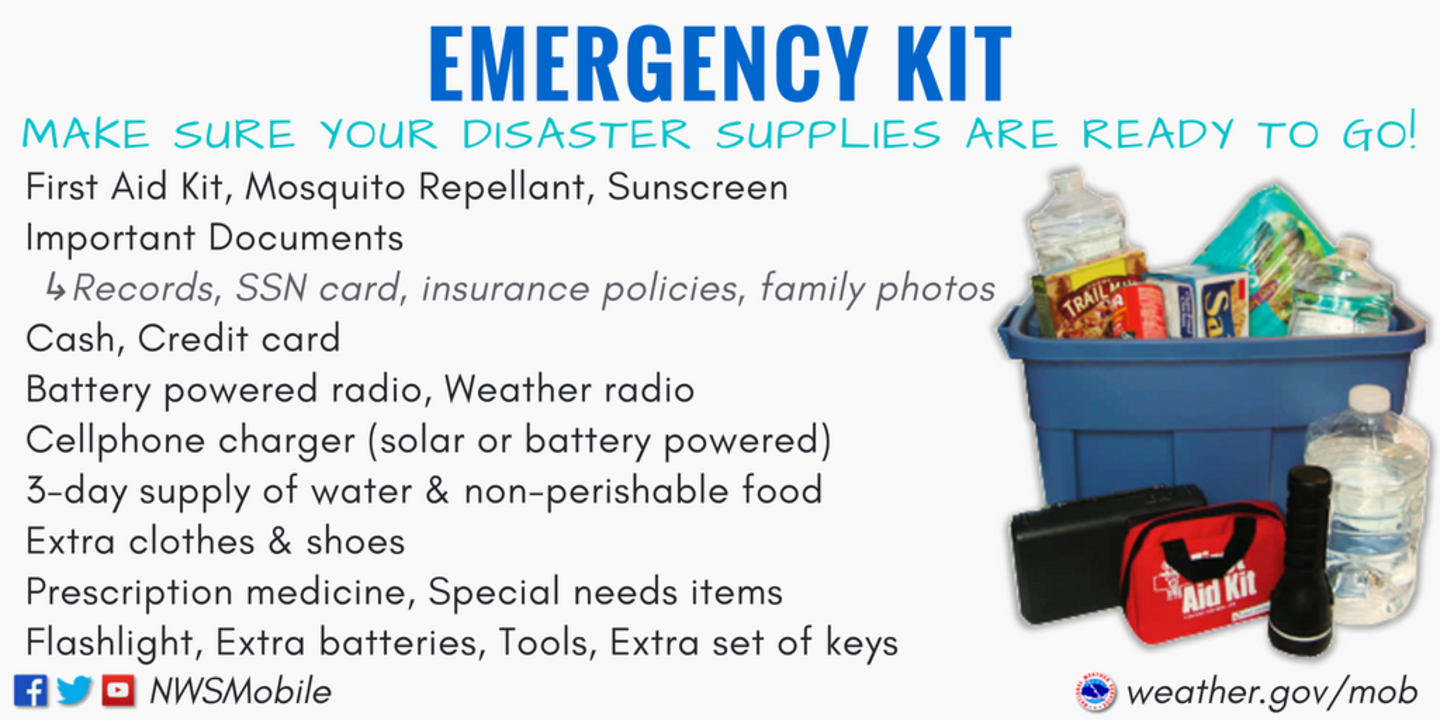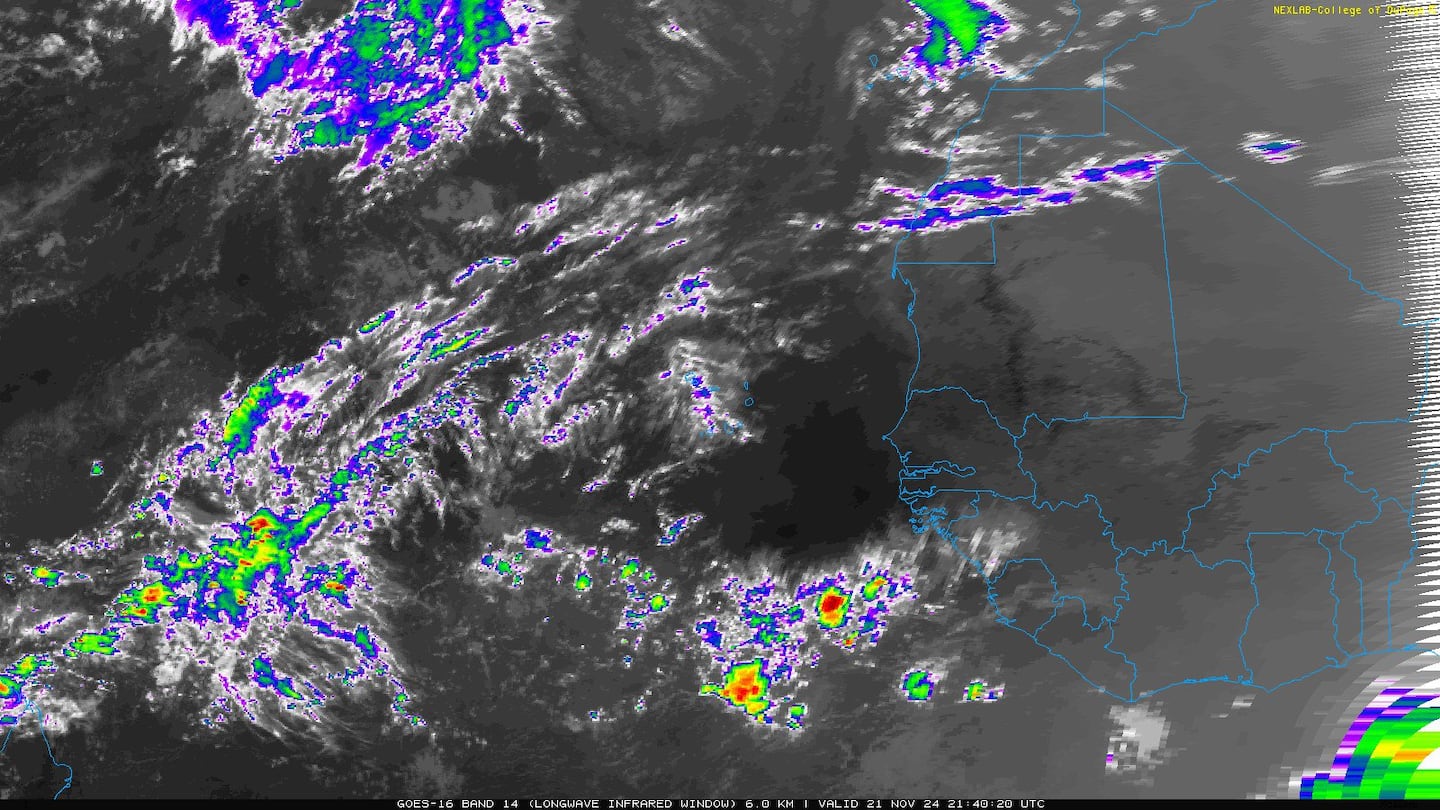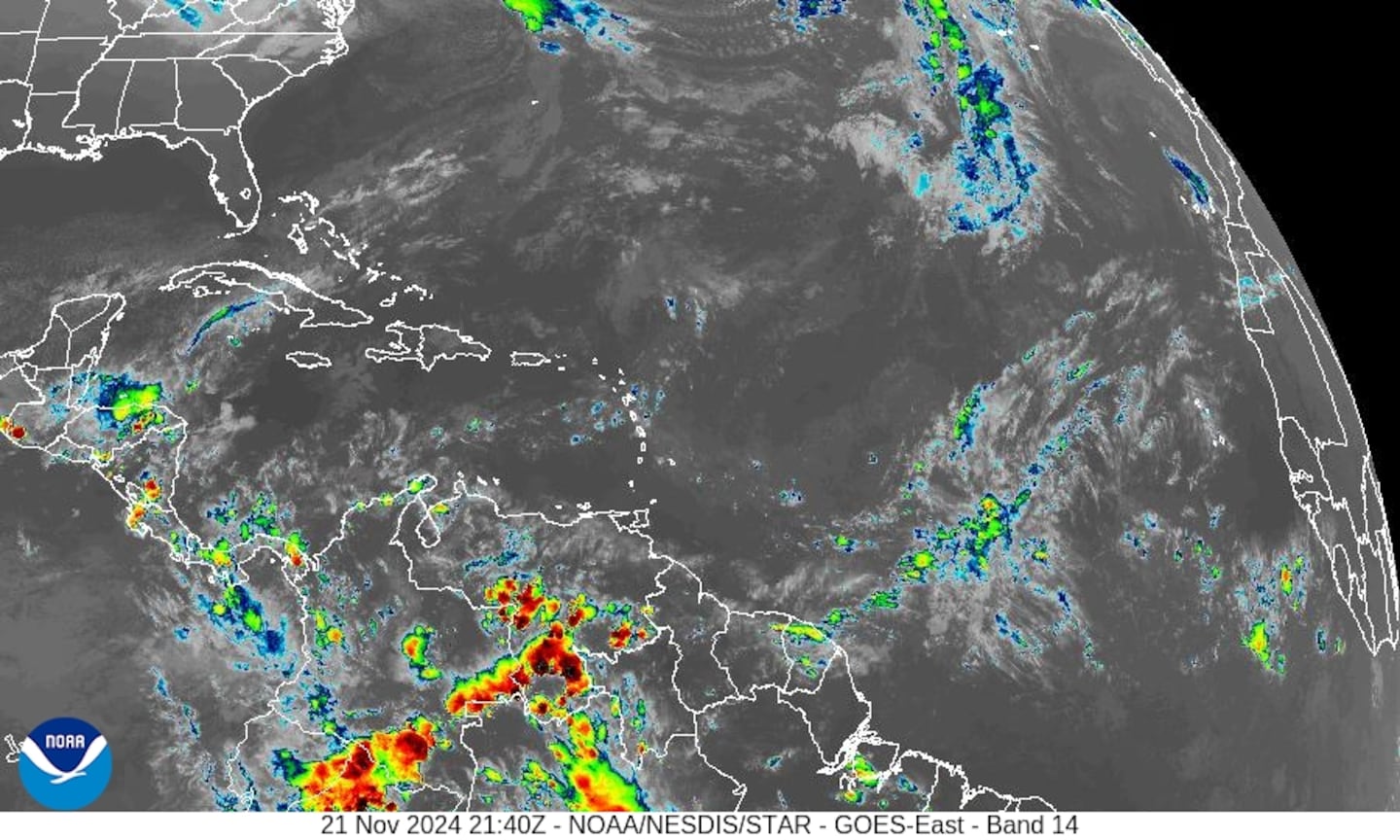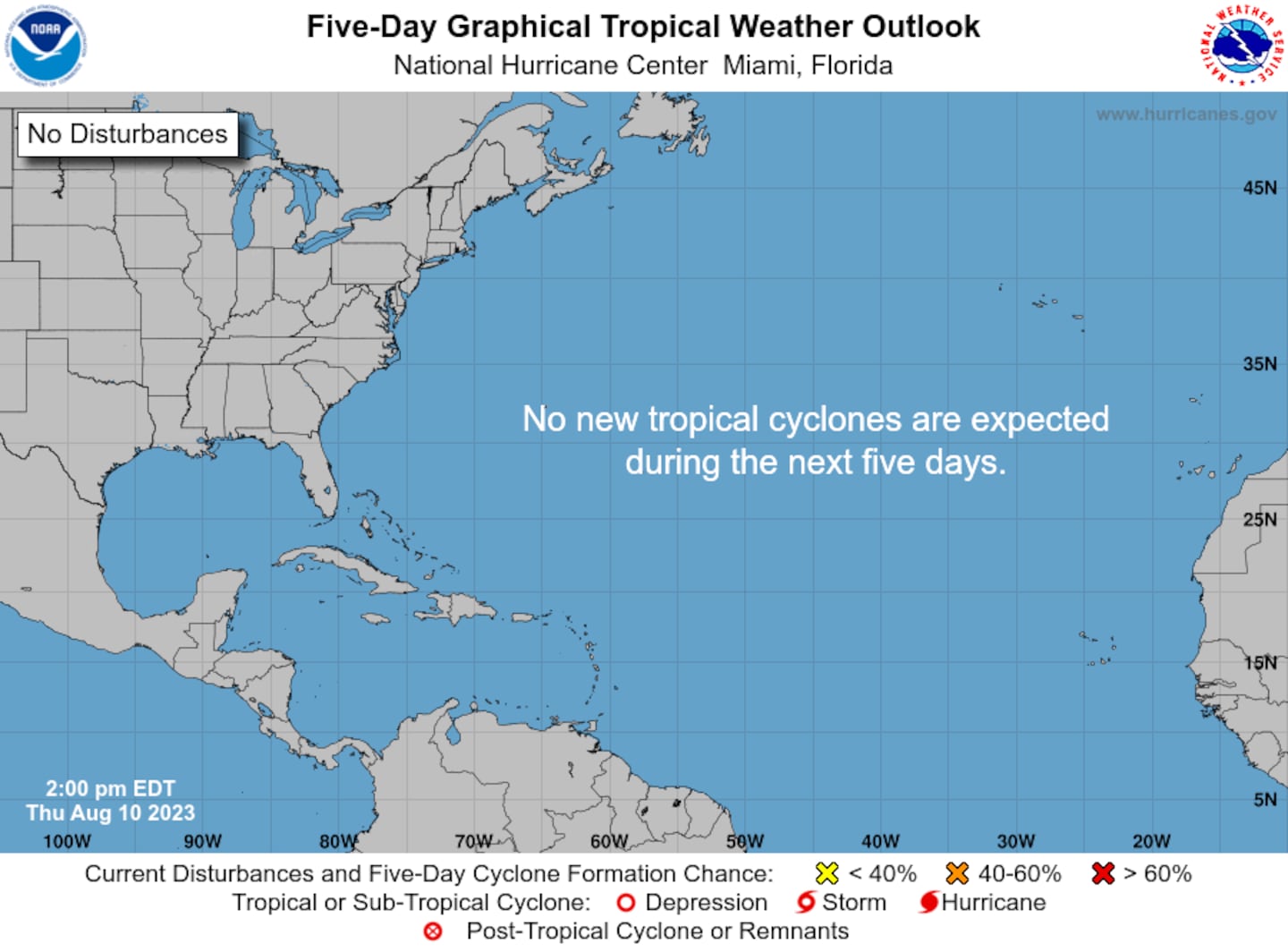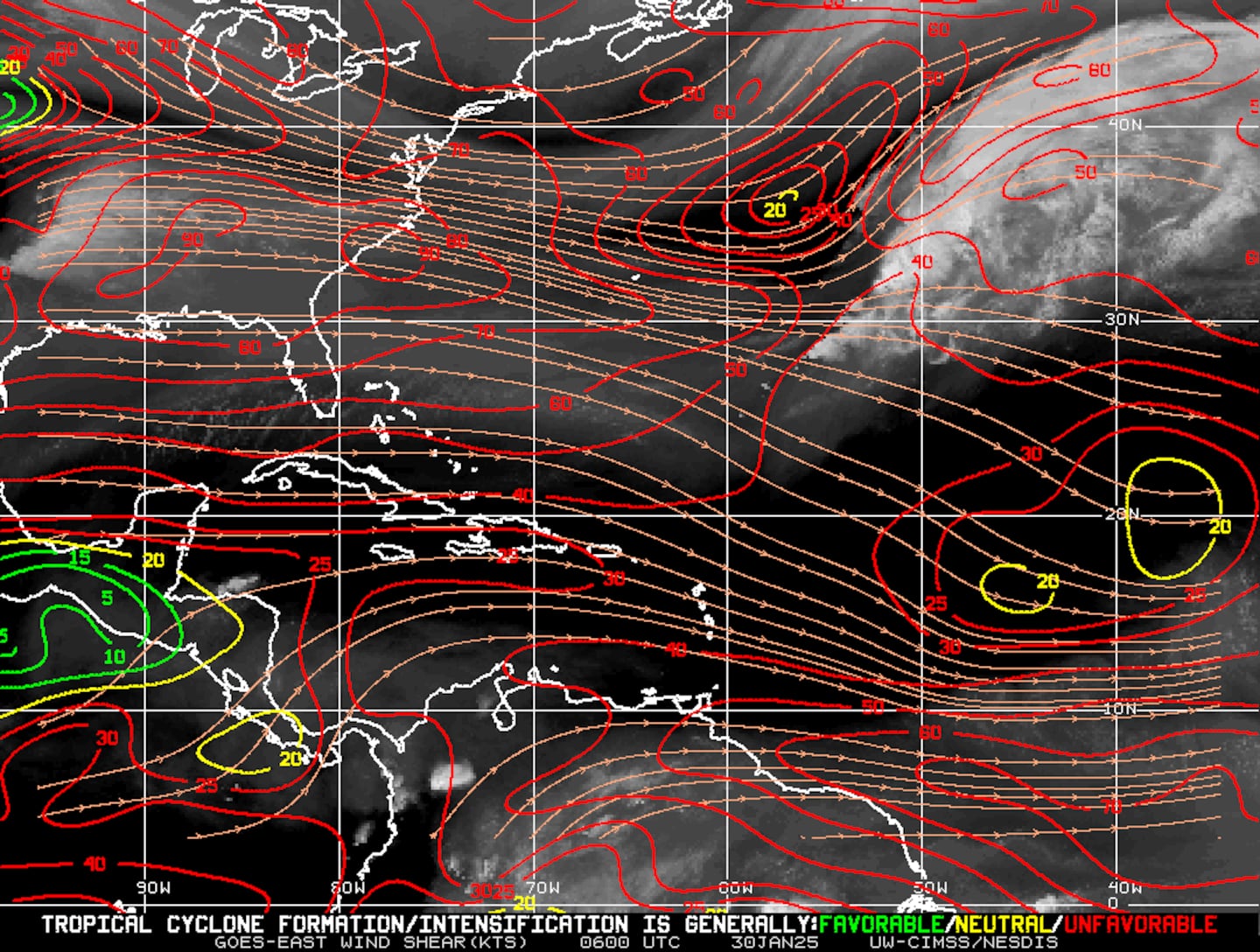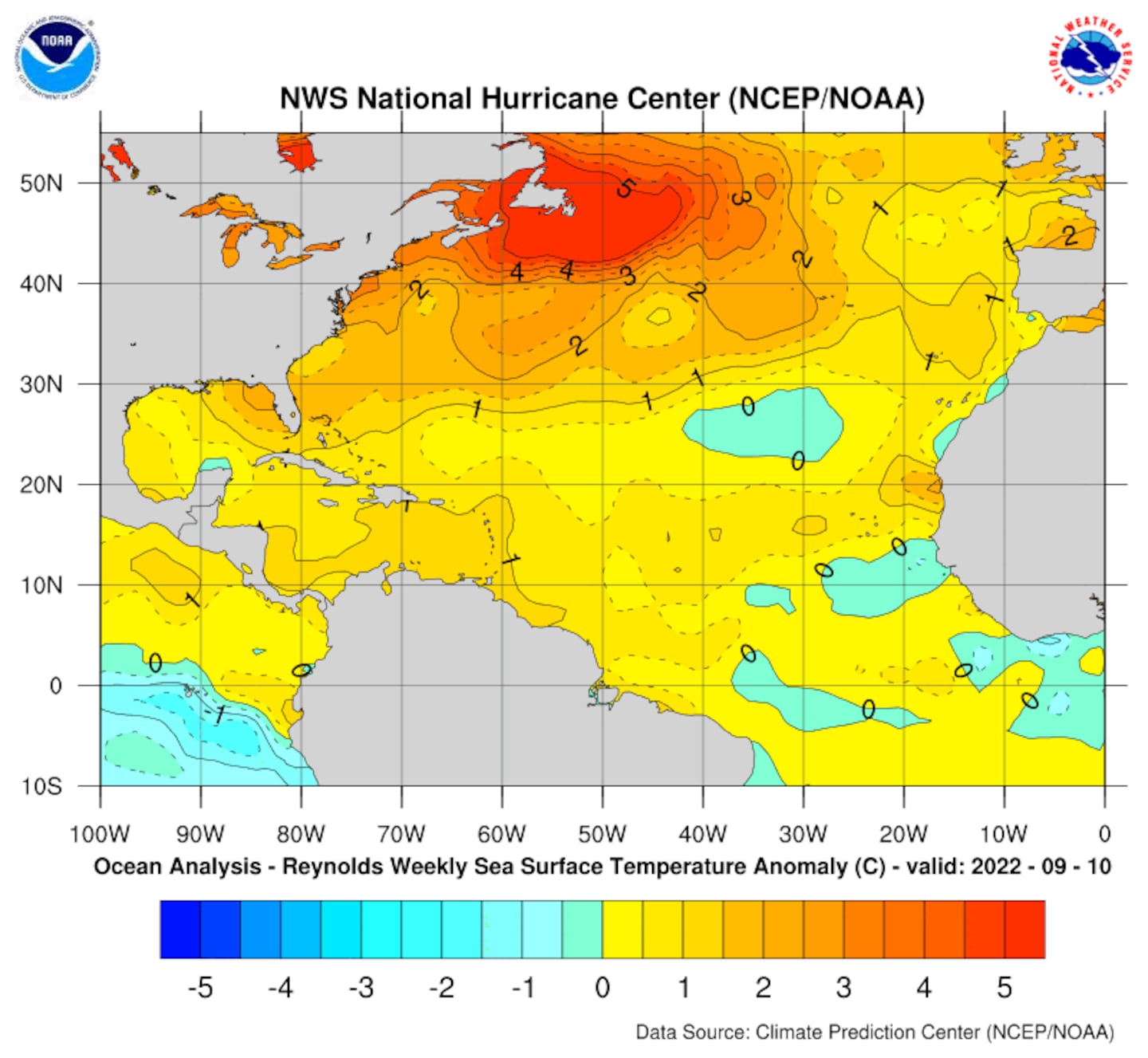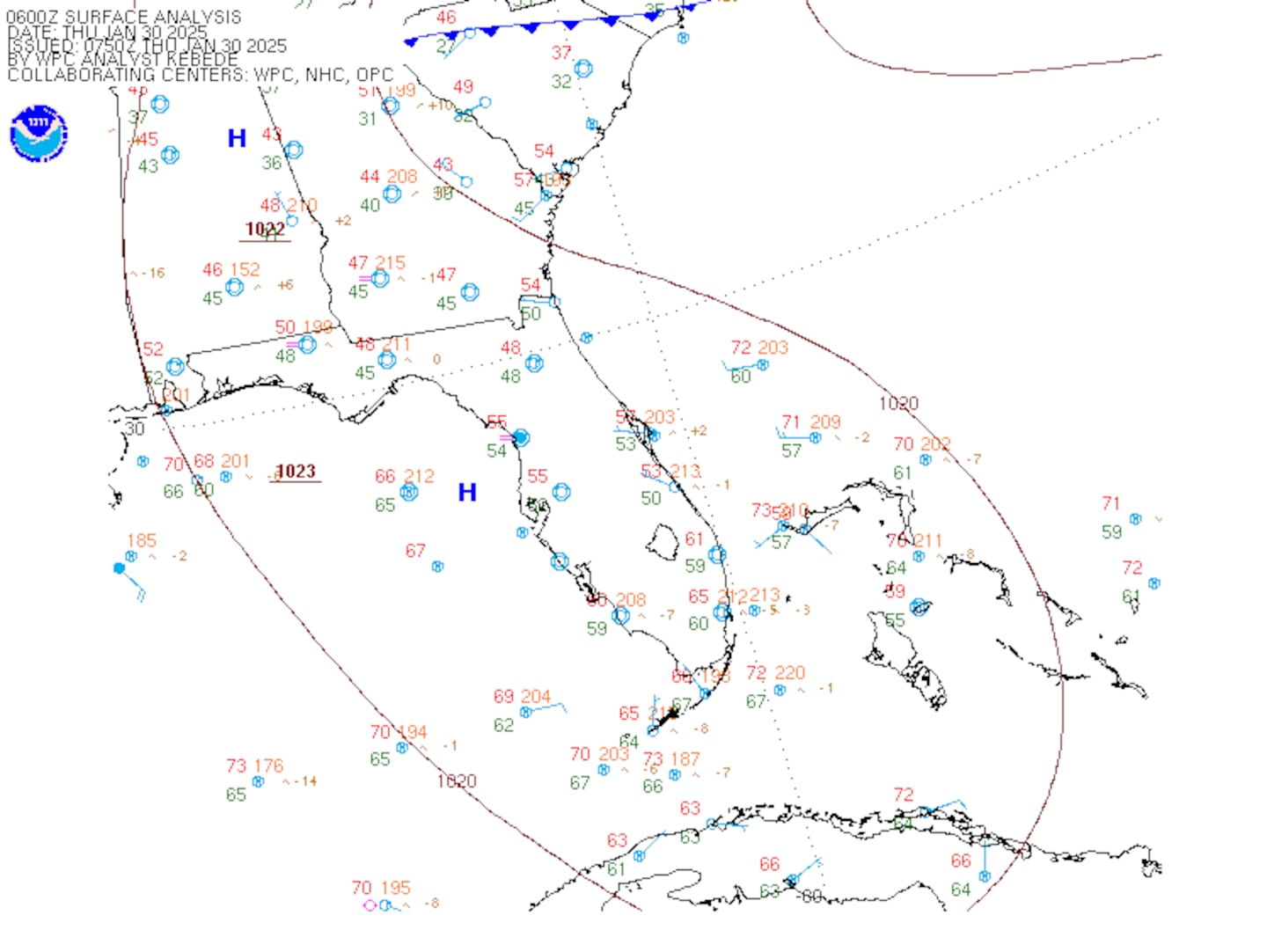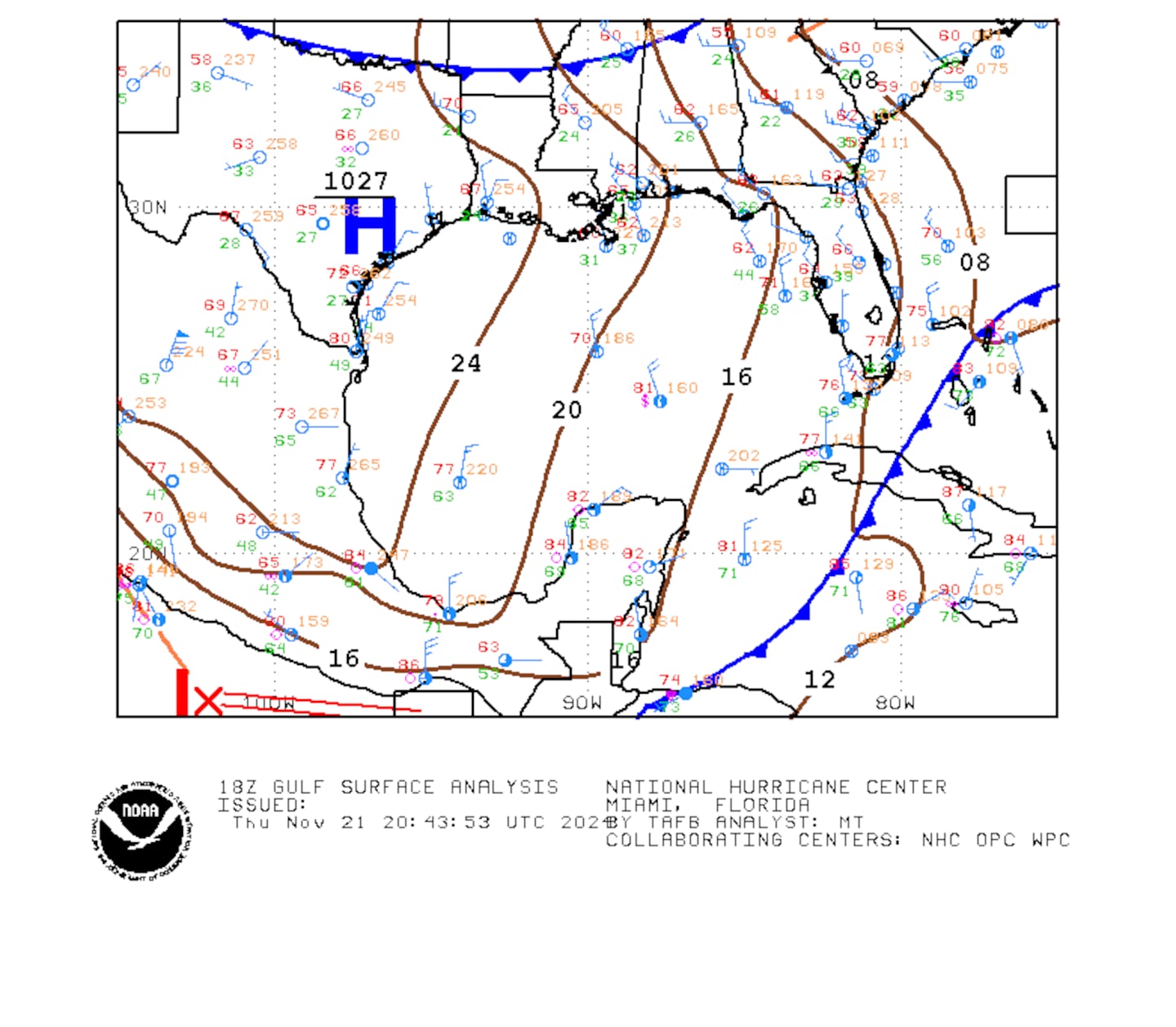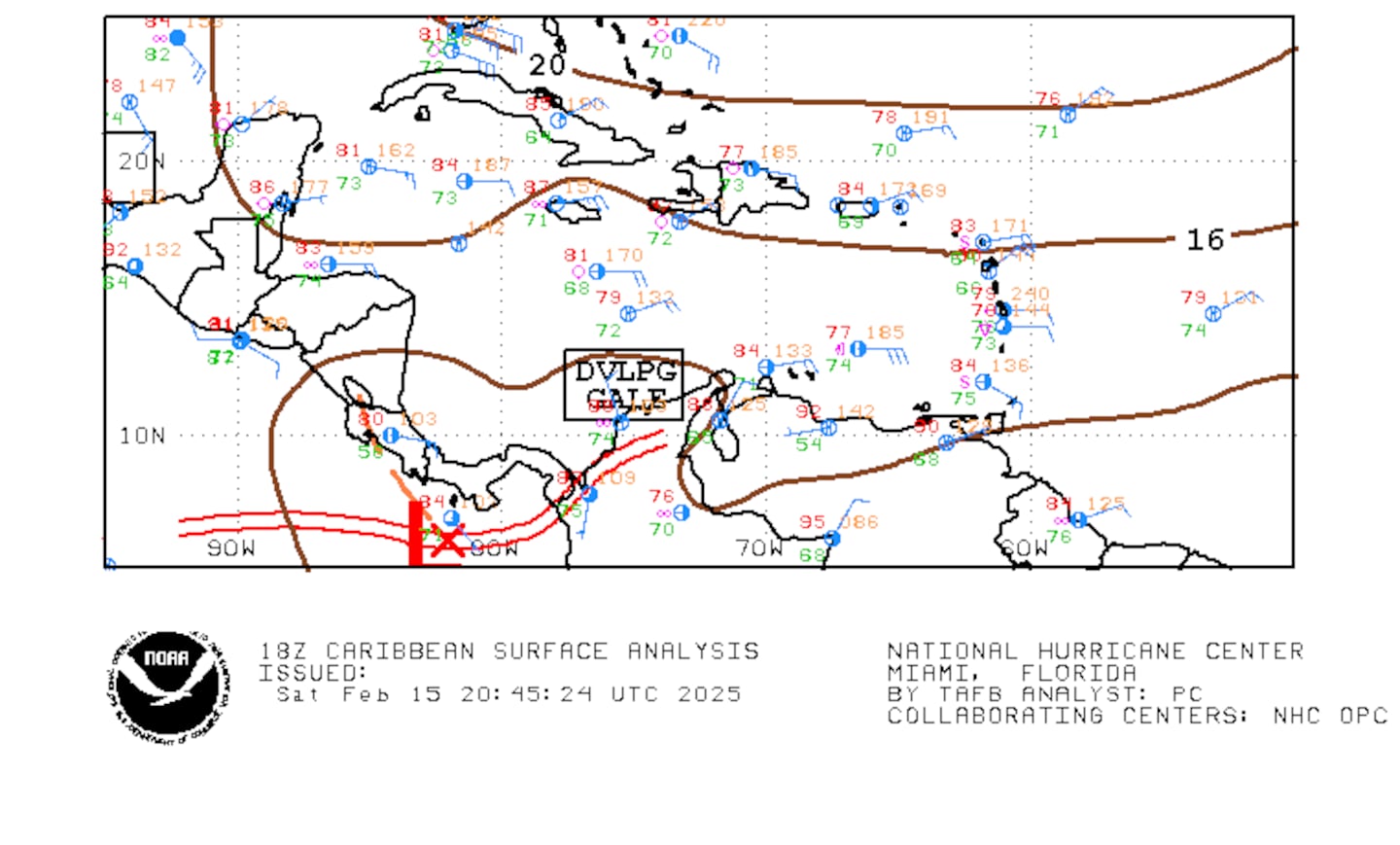Oct. 7, 2018 — The "Buresh Bottom Line": Always be prepared!.....First Alert Hurricane Survival Guide... City of Jacksonville Preparedness Guide... Georgia Hurricane Guide.
STAY INFORMED: Get the (free) First Alert Weather app
Eye on the Caribbean & Gulf of Mexico as tropical storm"Michael" (not Buresh!) organizes & strengthens. Here's hoping that Michael will not "row the boat ashore" BUT....
Given current forecast path - SUBJECT TO SOME CHANGES - between Mobile, Al. & the Big Bend of Fl. centered - perhaps - on the Panhandle, local impacts for Jacksonville, NE Fl. & SE Ga. are as follows:
* heavy rain in multiple bands from Mon. through Thu. with the potential for 1-3" of rain, more in some spots. Far more rain just offshore to the east & over NW Fl. & Panhandle closer to what should be the center of Michael. More eastward track in the end would equal more rainfall.
* breezy winds - combination of "Michael" to the west & moderately strong high pressure to the north will result in brisk winds out of the SE increasing each day Mon. - Thu. averaging 15-25 mph with gusts 30+ mph. Again - more east track would result in higher winds, especially later Wed.-Thu.
* isolated waterspouts &/or tornadoes, especially later Tue. through Thu.
* high rip current risk at area beaches
*** More significant impacts for the Fl. Big Bend, Panhandle & coastal Alabama.
REMEMBER: the "cone of uncertainty" is simply & only forecast error & has nothing to do with potential damage or damage swath. Do not get too caught up in exactly where the center might be going.
History - going back to about the mid 1990s - shows we should be wary of Oct. hurricanes given certain conditions which are in place right now - see "Buresh Blog" - Matthew (Fl.) 2 years ago (Sun., 10/07!)... Joaquin (Bahamas & El Faro) in 2015... Sandy (NY, NJ) in 2012.... Wilma (Yucatan &Fl.) in 2005... Mitch (Central America & Fl.) in 1998... Opal (Fl.) in 1995.
Strong convection persists over the Northwest Caribbean & has become more organized/symmetrical just off the coasts of Belize & the Yucatan Peninsula where low pressure is becoming stronger & better defined. There remains a good deal of mid & upper level shear at the moment, but hurricane hunter aircraft has found a steadily strengthening/organizing storm. The center has "jumped" a bit east which is common in developing tropical cyclones as the center is "pulled" underneath the stronger, more persistent convection. This so-called re-centering may occur again before the core becomes well established.
Global forecast models have generally come into pretty good agreement on Michael developing...... & becoming a hurricane but do vary widely on especially timing. I would expect models to become more consistent within the next day or so. The GFS is the fastest & farthest west - coming ashore Wed. afternoon over the Western Fl. Panhandle, give or take. The European model is more east & a good 24 hours slower - landfall Thu. afternoon. The UKMET can sometimes be a good compromise but is also the most concerning - farther east of any of the models with a direct hit just north of Tampa as a strong hurricane Wed. evening moving quickly northeast .... which would also have major implications for Jacksonville. This scenario would be the most costly & dangerous for the west coast of Fl. & even perhaps NE Fl./SE Ga.
In any case... Michael looks to be a fairly swift moving tropical cyclone which means dangerous impacts could extend well inland. Everyone from Florida to New Orleans should "hurricane prepare"..... & depending on where landfall is.... flooding & tornadoes could occur far inland over parts of Alabama, Ga., Fl. & the Carolina's (potentially bad news for Florence - wary Carolina residents).
Radar imagery below courtesy South Fl. Water Management District (magenta line indicates NHC Michael forecast track):
Caribbean:
Gulf of Mexico:
Spaghetti plots for Michael:
Ensemble spaghetti model plots give us a good idea of the uncertainty & the array possible outcomes in the coming days:
Michael is battling a good deal of shear but still managing to organize - which is cause for even more concern considering environmental, surface & upper air conditions become even more favorable in the coming days. Westerly shear of 50+ mph(!) should delay overall intensification & - at least initially - result in a system heavily weighted (heaviest rain, strongest winds) on its eastern side. Shear relaxes over the Central Gulf - & when combined with better upper level ventilation + warm ocean temps. - there is concern for fairly rapid strengthening once at a more northern latitude over the Gulf. The red lines below indicate strong shear (courtesy CIMMS):
0
"Bath water" over parts of the Gulf:
1
As for movement..... the long lasting Bermuda high summer-style system over or near the Southeast U.S. will be a major player regarding the ultimate track of Michael. At the same time, a deep upper level trough will dig into the Western U.S. Given additional upstream "energy" that has yet to become a part of this trough + the stubbornness of the eastern ridge the last 6-7 weeks, I have a tendency to favor a more western track. Forecast models, however, say differently bringing the system ashore near Mobile &/or the Fl. Panhandle. The UKMET model is even farther east - closer to the Big Bend of Fl. or even a little south - as a powerful hurricane... which is very disconcerting.
As for timing... Wed./Thu. is when Michael should make landfall with the GFS earliest & farthest west... the UKMET only a little later & fartherest east.... the European in-between on location but not until late Thu. From there, models have come into better agreement on a piece of the western trough extending far enough south to fully pick up the system, but it appears likely at this time that the disturbance will be absorbed by the westerlies & upper level trough so as to not hang around any one location for too long while moving northeast. That part of the forecast, however, is still highly uncertain.
So lots of question marks as one would expect at this early juncture but everyone from Florida to Louisiana & - even on the east coast - should stay up to date on the latest forecasts.
Map below is upper levels (500mb) - European model - noon Tue. showing the stubborn & important high pressure just off the east coast vs. the deep trough over the Western/Centrl U.S:
The overall pattern through the first 2+ weeks of Oct. will favor tropical development over the Atlantic Basin. The velocity potential anomaly map below indicates expansive green lines - upward motion - spreading from the E. Pacific into the Atlantic Basin, part of a MJO (Madden-Julian Oscillation) pulse.
Note the secondary peak of the hurricane season in mid Oct.:
Meanwhile... Leslie continues to crawl over the Central Atlantic. Leslie will stay far away from any land areas as the tropical cyclone turns sharply eastward, possibly even south/southeast & moves from the Central into the Eastern Atlantic.
Atlantic Basin:
CIMMS satellite below shows the extent of dry air but also indicates it doesn't necessarily shut down the basin. Dry air is indicated over parts of the Gulf of Mexico but is not necessarily widespread nor exceptionally dry & has been "thinning out" recently.
E. Atlantic:
Mid & upper level wind shear (enemy of tropical cyclones) analysis (CIMMS). The red lines indicate strong shear:
The Atlantic Basin.....
Water vapor imagery (dark blue indicates dry air) - notice the dry air spinning into Leslie:
Deep oceanic heat content is seasonably high over the Caribbean, Gulf of Mexico & SW Atlantic as one would expect early in the fall....
Sea surface temp. anomalies:
SE U.S. surface map:
Surface analysis centered on the tropical Atlantic:
Surface analysis of the Gulf:
Caribbean:
The E. Pacific remains active....
"Sergio" is an annular-looking hurricane well offshore of Mexico with an eye that is some 90 miles across! but far to the south/southwest of the Baja & will stall then turn sharply northeast. Eventually the tropical cyclone - or its remnants - may affect parts of Mexico, the Baja & Southwest U.S. late in the week when a deep upper level trough sets up shop over the Western U.S. & accelerates Sergio to the northeast.
Cox Media Group

